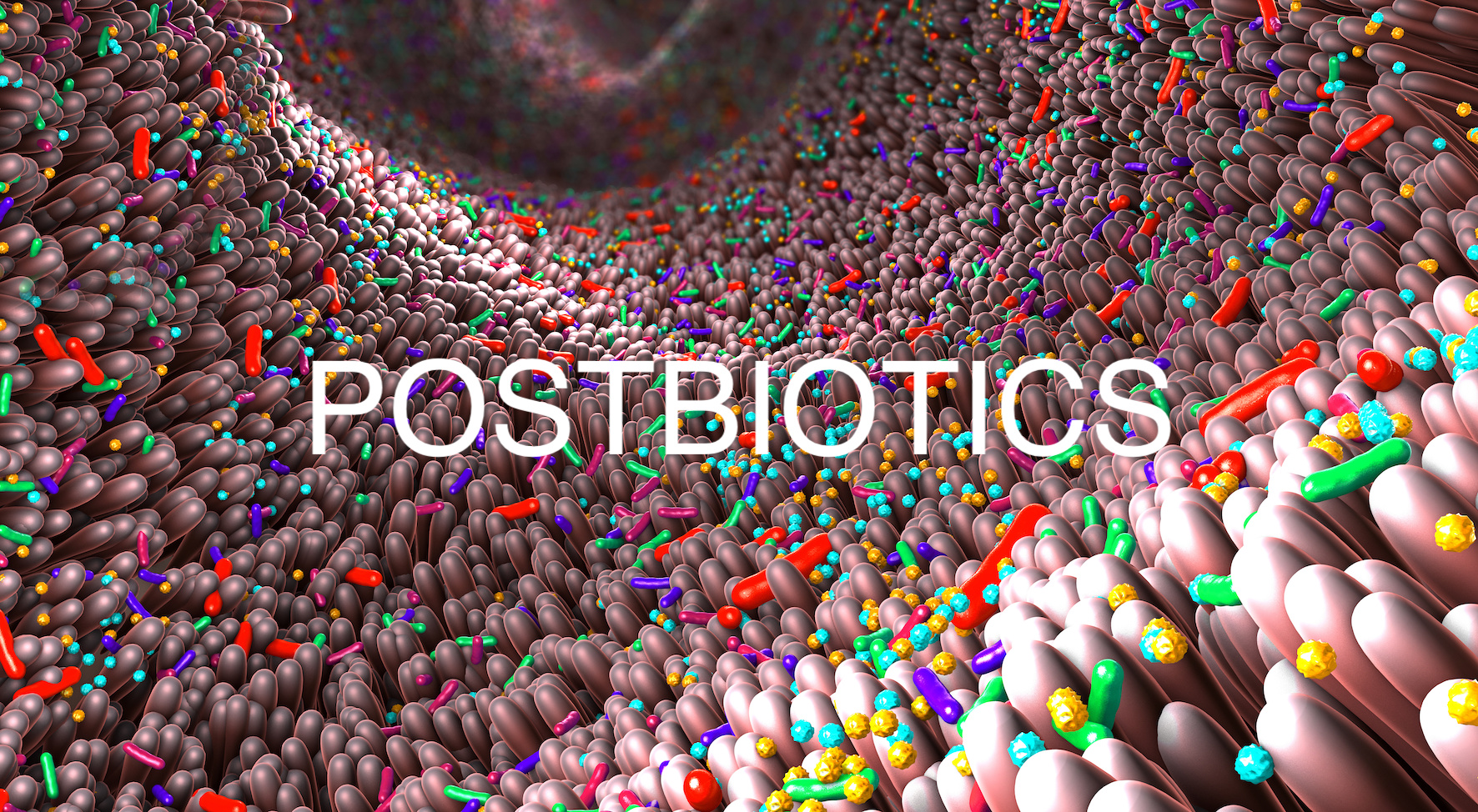by Falcao, Leila, PhD – Inaturals SAS – Contact: leila.falcao@inaturals.fr
Our skin is home to millions of bacteria, fungi and viruses that compose the skin microbiome. Like those in our gut, skin microorganisms have essential roles in the protection against invading pathogens, the education of our immune system and the breakdown of natural products. As the largest organ of the human body, skin is colonized by beneficial microorganisms and serves as a physical barrier to prevent the invasion of pathogens.
In circumstances where the barrier is broken or when the balance between commensals and pathogens is disturbed, skin disorders or even systemic disease can result. Studying the composition of the microbiome at different sites is valuable for elucidating common skin disorders such as eczema and psoriasis (Byrd et al., 2018).
It is important to keep into consideration the crosstalk between skin microbiome and skin immunity, which is of huge importance in overall health of skin and prevention of various cutaneous disorders. Interestingly, Innate immune responses have also been found to control microbial colonization ensure effective host defenses and to maintain or restore tissue homeostasis (Figure 1).
An unbalanced composition of the skin microbiome has been associated with skin inflammation but a causative relationship and the specific pathogenic mechanisms have been difficult to establish. According to Rudikoff and Lebwohl (1998) Staphylococcus aureus, a common cause of skin infections, is frequently found on the skin of patients with atopic dermatitis but not on the skin of healthy individuals. Other studies have showed that immunity against S. aureus depends on neutrophil recruitment mediated by IL‑1 receptor 1 (IL‑1R1) and myeloid differentiation primary response protein 88 (MYD88) signalling, and by the production of IL‑17 by skin γδ T cells. In 2013 Nakamura et al. have showed that colonization of the skin with S. aureus triggers local allergic responses by releasing δ‑toxin, which directly induces the degranulation of dermal mast cells, and in turn promotes both innate and adaptive (TH2 cell) responses (Figure 2). This study has also illustrated how skin microorganisms can contribute to the pathogenesis of inflammatory skin disorder by directly regulating local immune cell responses (Pasparakis et al. 2014).

Propionibacteria (P. acnes, P. avidum, and P. granulosum), staphylococci (Staphylococcus epidermidis), micrococci, corynebacteria, and Acinetobacter are the normal microbiome that colonize the human skin as resident species, while Staphylococcus aureus, Escherichia coli, Pseudomonas aeruginosa, and Bacillus species are some of the transient species (Krutmann, 2009). Microorganisms that colonize the surface of the skin interact with epithelial and immune cells and have important functions in regulating immune homeostasis and inflammation in the skin (Pasparakis et al., 2014). The resident microbiome is considered to occupy the space that may be taken by pathogenic microorganisms that can cause infection, but at the same time resident microbiome themselves become pathogenic under conditions of trauma, injury, and when the host becomes immunocompromised or in inflammation. The type of species to colonize the skin is regulated by several factors including flow of secretions, pH, osmotic potential, integrity of barrier function, and biochemical products such as lipids, amino acids, and vitamins (Krutmann, 2009).
Subjects with atopic dermatitis have increased bacterial colonization with S. aureus due to a multitude of factors, including a defective innate immune response (Boguniewicz and Leung , 2011), and this finding correlates with their notably less diverse skin microbiome (Paller et al., 2019).
Keratinocytes are the main epidermal cell type and play an essential role in skins defense. Besides creating a physical barrier between the environment and the internal body, they can express pattern recognition receptors (PRRs) that activate the immune response when exposed to pathogens (Figure 2). PRRs have important immunoregulatory functions and contribute to the maintenance of immune homeostasis and the regulation of immune and inflammatory responses in the skin(Krutzik et al. 2005).

Skin microbial communities are shaped by interactions between organisms and with the host.
In the skin, many interactions between commensals and Staphylococcus aureus have been identified. Antibiotics produced by coagulase-negative Staphylococcus and specifically by Staphylococcus lugdunensis prohibit colonization of S. aureus. Also, Staphylococcus epidermidis can inhibit S. aureusbiofilm formation with production of the serine protease glutamyl endopeptidase (Esp). Moreover, when Esp-expressing S. epidermidisinduces keratinocytes to produce antimicrobial peptides via immune cell signalling, S. aureus is effectively killed. In addition, Staphylococcus hominis produced lantibiotics synergize with human antimicrobial peptide LL‑37 to decrease S. aureus colonization. In contrast to inhibiting S. aureus, Propionibacterium acnes produces a small molecule, coproporphyrin III, that promotes S. aureusaggregation and biofilm formation (Byrd et al., 2018).
Toll like receptors (TLRs) are the most important and well-studied PRRs in keratinocytes. When TLRs are activated, the Toll/IL-1 receptor (TIR) domain of TLRs can act with an adaptor molecule owning the same TIR domain and then several proinflammatory cytokines are produced. As a result, cytokines such as tumor necrosis factor (TNF)-α, interleukin (IL)-1, IL-6, and chemokines such as IL-8 as well as antimicrobial peptides (AMPs) are secreted (known as the MyD88-dependent pathway) (Kawai and Akira, 2010). TLRs play a critical role in anti-bacterial responses. TLR2 recognizes Staphylococcus aureus lipoproteins and LTA as well as promoting the expression of AMP β-defensin 3, IL-1 family cytokines, chemokines (C-X-C motif) ligand (CXCL) 1 and CXCL2. Besides, TLR2 heterodimerizes TLR2/1 and TLR2/6 recognize Propionibacterium acnes in human keratinocytes, inducing NF-κB and activator protein 1 activation (Su et al., 2017).
Also, upon activation of TLRs on epidermal keratinocytes, β-defensins as well as cathelicidin that are natural antimicrobial peptides (AMPs) which are released to inhibit microbial population. These data indicate that skin microbiome, skin integrity, and skin immune system work coherently to control cutaneous functions and prevent skin disorders (Krutmann, 2009). AMPs have proven antibacterial and immunomodulatory properties (Niyonsaba et al., 2017). A variety of other AMPs are expressed constitutively and putting AMPs as strategic natural chemical skin elements to protect skin.
Some mechanisms of activation of AMPs in the skin have recently been elucidated. For example, it is known that bacterial flagellin activated TLR5 induces expression of AMPs S100A8/S100A9, S100A7, S100A15, and human β-defensin (HBD)2 in keratinocytes (Abtin et al., 2010). S100A7 (psoriasin), S100A8 (calgranulin A), and S100A9 (calgranulin B) are AMPs belonging to S100 protein family. Psoriasin, also known as S100A7, mainly induced by flagellin of Escherichia coli and has bacteria-killing activities (Brandwein et al, 2017). Psoriasin is also found to relate to wound healing and benefits skin’s innate immunity (Bayer et al., 2017). Several cytokines and chemokines such as IL-6, IL-8, TNF-α, CXCL1, CXCL2, CXCL3, and CCL20 are induced by S100A8/A9 and those cytokines in turn enhanced S100A8/A9 production (Nukui et al., 2008). S100A8/A9 also involves in keratinocytes’ proliferation as well as chronic inflammation. All these antimicrobial, biochemical and anti-inflammation mechanisms occurring together prove the existing crosstalk among them and the high speciality and autonomy of skin tissue in balance and repair an unbalanced situation.
Understanding the mechanisms that regulate immune homeostasis to ensure efficient host defence in the absence of pathological inflammatory responses remains the major challenge in immunology, particularly in barrier tissues (such as the skin) that are constantly exposed to potentially harmful insults threatening to throw immunoregulatory mechanisms off balance (Pasparakis et al., 2014).
Perspectives and conclusion
Skin microbiome modulation and skin immunity system modulation are active areas in skincare research. It is known that intrinsic and extrinsic aggressions on the skin can influences homeostasis and immunity skin system. Further investigation of the crosstalk that occurs between the microbiome immunity system and botanicals in the skin to better elucidate the mechanisms that regulate skin immune homeostasis and inflammation, promoting balanced skin microbiome and naturally restore skin immunity. The questions arise: Can botanicals boost skin immunity by balance skin microbiome? To address this query, further studies are needed which will open new avenues in the skin microbiome-plant based ingredients.
As the first line of defense in human immune system, keratinocytes are receiving broader attention by research community. They function through various mechanisms including recognition of harmful microbes, production of AMPs as well as pro-inflammatory cytokines, chemokines (for activating relative signal transduction pathways to induce the expression of effective genes) and regulate the function of other immune cells.
In summary, the human skin is equipped enough to defend itself of any aggression. More research on natural molecules focused on restoring these natural skin defense strategies (i.e. by genetic expression of antimicrobial proteins and enhancers of skin immunity) are needed to promote skincare solutions that respect and join forces with the microbiome by recruiting the immune system of the skin – that means: respecting the natural skin defense process. Collaborate with the skin or place to treat it: Could it be the cosmetics of tomorrow? that would be a more elegant and efficient way while being natural.
References
- Abtin A, Eckhart L, Gläser R, et al. The antimicrobial heterodimer S100A8/S100A9 (calprotectin) is upregulated by bacterial flagellin in human epidermal keratinocytes. J Invest Dermatol 2010;130 (10):2423–2430. doi:10.1038/jid.2010.158.
- Bayer A, Lammel J, Lippross S, et al. Platelet-released growth factors induce psoriasin in keratinocytes: implications for the cutaneous barrier. Ann Anat 2017;213:25–32.
- Boguniewicz M., Leung D.Y.M. Atopic dermatitis: A disease of altered skin barrier and immune dysregulation. Immunol. Rev. 2011;242:233–246.
- Brandwein M, Bentwich Z, Steinberg D. Endogenous antimicrobial peptide expression in response to bacterial epidermal colonization. Front Immunol 2017;8:1637.
- Byrd, A. L.; Belkaid Y. and Segre, J. A. The human skin microbiome. Nature Reviews Microbiology. V. 6, march 2018, p. 143-155.
- Kawai T, Akira S. The role of pattern-recognition receptors in innate immunity: update on Toll-like receptors. Nat Immunol 2010;11 (5):373–384.
- Krutmann J. Pre- and probiotics for human skin. J Dermatol Sci. 2009;54:1-5.
- Krutzik, S.R.; Tan, B.; Li, H.; Ochoa, M.T.; Liu, P.T.; Sharfstein, S.E.; Graeber, T.G.; Sieling, P.A.; Liu, Y.J.; Rea, T.H.; et al. TLR activation triggers the rapid differentiation of monocytes into macrophages and dendritic cells. Nat. Med. 2005, 11, 653–660
- Niyonsaba F, Kiatsurayanon C, Chieosilapatham P, Ogawa H. Friends or Foes? Host defense (antimicrobial) peptides and proteins in human skin diseases. Exp Dermatol (2017) 26(11):989–98.
- Nukui T, Ehama R, Sakaguchi M, et al. S100A8/A9, a key mediator for positive feedback growth stimulation of normal human keratinocytes. J Cell Biochem 2008;104 (2):453–464.
- Paller A.S., Kong H.H., Seed P., Naik S., Scharschmidt T.C., Gallo R.L., Luger T., Irvine A.D. The microbiome in patients with atopic dermatitis. J. Allergy Clin. Immunol. 2019;143:26–35.
- Pasparakis, M., Haase, I. & Nestle, F. Mechanisms regulating skin immunity and inflammation. Nat Rev Immunol 14, 289–301 (2014).
- Su Q, Grabowski M, Weindl G. Recognition of Propionibacterium acnes by human TLR2 heterodimers. Int J Med Microbiol 2017;307 (2):108–112.




No comments! Be the first commenter?